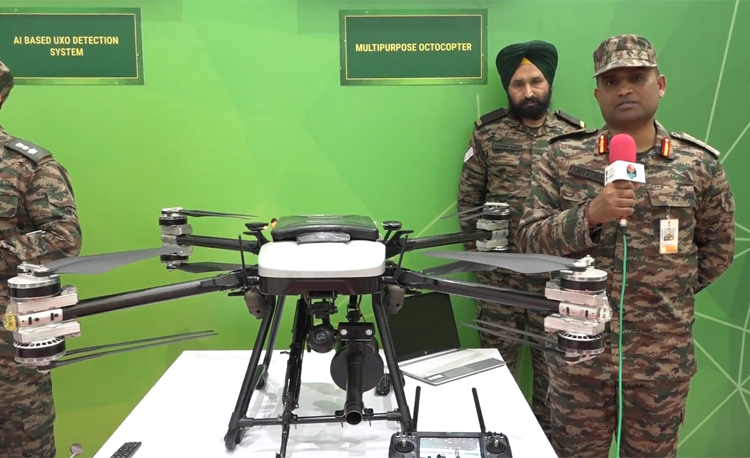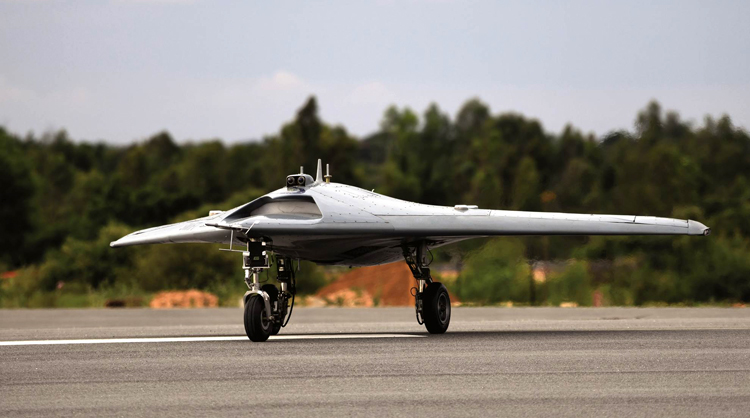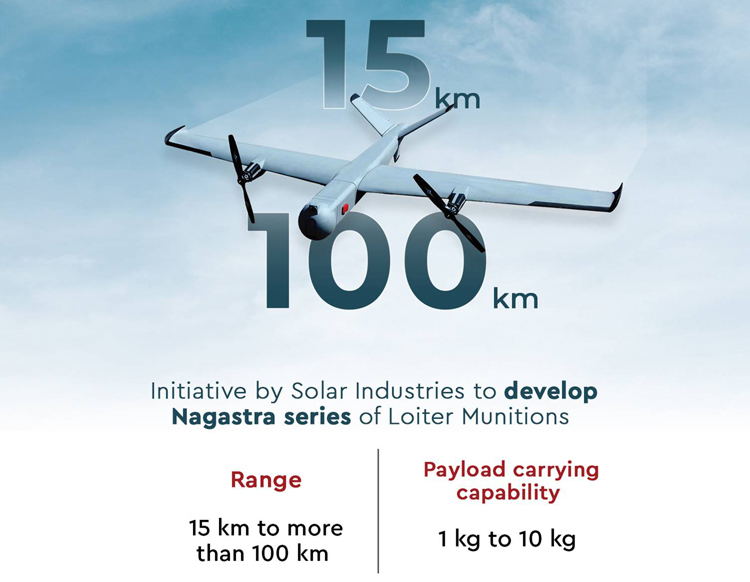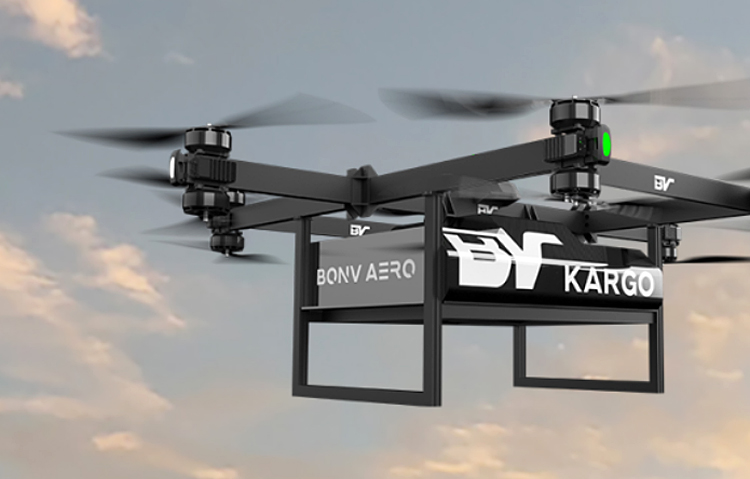INDIAN ARMED FORCES CHIEFS ON OUR RELENTLESS AND FOCUSED PUBLISHING EFFORTS

The insightful articles, inspiring narrations and analytical perspectives presented by the Editorial Team, establish an alluring connect with the reader. My compliments and best wishes to SP Guide Publications.

"Over the past 60 years, the growth of SP Guide Publications has mirrored the rising stature of Indian Navy. Its well-researched and informative magazines on Defence and Aerospace sector have served to shape an educated opinion of our military personnel, policy makers and the public alike. I wish SP's Publication team continued success, fair winds and following seas in all future endeavour!"

Since, its inception in 1964, SP Guide Publications has consistently demonstrated commitment to high-quality journalism in the aerospace and defence sectors, earning a well-deserved reputation as Asia's largest media house in this domain. I wish SP Guide Publications continued success in its pursuit of excellence.
- Operation Sindoor: Resolute yet Restrained
- India’s Operation Sindoor Sends a Clear Message to Terror and the World – ‘ZERO TOLERANCE’
- Japan and India set forth a defence cooperation consultancy framework, talks on tank and jet engines
- Terrorist Attack in Pahalgam in Kashmir: Unfolding a long surgical war against PAK
- Lt General Pratik Sharma takes over Command of Indian Army's Northern Command
More About Indigenous Drones
The Indian Army and the private sector have been actively developing their own fleet of loitering munitions and autonomous drones, emphasising indigenous development
 |
The Author is Former Director General of Information Systems and A Special Forces Veteran, Indian Army |

The war in Ukraine has shown how loitering munitions or 'kamikaze drones' are reshaping battle tactics. is investing heavily in indigenous drone technology, pushing for self-reliance and innovation; aiming to stay ahead in this new era of aerial combat. In Ukraine, Russia's Lancet-3 drones, with a range of 40 km and a 40-minute endurance, have been systematically targeting Ukrainian artillery. Ukraine, in response, has used US-supplied Switchblade drones and its own RAM II systems to counter Russian advances. Iran's Shahed-136 drones, used extensively by Russia, have proven that cheap, mass-produced drones can overwhelm even sophisticated air defence systems. In the Middle East, Israel is relying on Harop loitering munitions, capable of carrying a 23 kg payload, to conduct precision strikes.
The war in Ukraine has shown how loitering munitions or 'kamikaze drones' are reshaping battle tactics
Loitering munitions, which hover over targets before striking with pinpoint accuracy, have combined the surveillance capabilities of UAVs with the lethal precision of guided missiles. Unlike traditional missiles, they do not simply follow a predetermined trajectory; they loiter, track, and strike at the opportune moment. The result is a weapon that delivers intelligence and destruction in a seamless operation. Equipped with artificial intelligence, these drones can execute complex missions with minimal human intervention, making them faster and more effective than traditional attack systems. The impact of these technologies is already visible across global conflicts, where they are proving to be game-changers.

The Indian Army has been actively building its own fleet of loitering munitions and autonomous drones, emphasising indigenous development. The SkyStriker drone, already in service, has a range of 500 km and is designed for Suppression of Enemy Air Defences (SEAD). More recently, India inducted the Nagastra-1 in 2024, a tactical drone with a 15 km range and a 1 kg warhead, specifically designed for high-altitude warfare, particularly along the India-China border. In 2021, India's Army demonstrated its capability with a 75-drone swarm, executing coordinated attacks over a 50 km range. By 2023, NewSpace Research & Technologies delivered an even more advanced system: a swarm of 100 drones designed for battlefield deployment. In March 2022, ZMotion Autonomous Systems successfully tested three loitering munitions in Ladakh, demonstrating their effectiveness at 40 per cent lower costs than imported alternatives. Tata Advanced Systems' ALS-50, a vertical take-off and landing (VTOL) drone that transitions to fixed-wing mode, has also completed successful trials at Pokhran.
Research is now focusing on AI-driven drones capable of detecting enemy assets through acoustic sensors, similar to advancements in Ukraine, especially since the future of drone warfare isn't just about individual units but swarms. India's National Aerospace Laboratories is also working on a stealthy, long-range loitering munition weighing 150 kg, designed to strike targets 900 km away with an endurance of 6-9 hours. For India, the integration of AI, swarm technology, and long-range loitering munitions will ensure competing at the cutting edge of modern warfare. Notably, China is procuring one million loitering munitions by 2026.

According to recent news, the Aeronautical Development Establishment (ADE) of the Defence Research and Development Organisation (DRDO) has started procuring components for the 13-tonne 'Ghatak' Unmanned Aerial Combat Aerial Vehicle (UCAV) stealth drone prototype, in anticipation of getting the funding green signal from the Ministry of Defence (MoD). This follows successful testing and validation of critical stealth and flying technologies through the Stealth Wing Flying Testbed (SWIFT) program, which undertook its maiden flight in July 2022, serving as a technology demonstrator. Designed with a 'flying wing' shape for enhanced stealth, the Ghatak UCAV is aimed at conducting deep penetration strike missions in heavily defended enemy airspace. Powered by the indigenous dry Kaveri engine, the Ghatak's weapon bay is designed to carry up to 1.5-tonne payload, like precision-guided bombs while maintaining a low profile against enemy radar. The Kaveri engine, producing 49kN thrust, is a non-afterburner variant adapted for better fuel efficiency and reduced heat signatures for stealth operations and longer flight durations.
For India, the integration of AI, swarm technology, and long-range loitering munitions will ensure competing at the cutting edge of modern warfare
The overall funding for the 13-tonne Ghatak UCAV program is estimated to cost $600 million (₹500 crore), which is likely to be put up for approval of the Cabinet Committee of Security (CCS) led by Prime Minister Narendra Modi, pending successful trials of the Ghatak UCAV prototype, in mid or second half of 2025.

Solar Defence and Aerospace Limited has revealed its latest weapon system, the Nagastra-3 loitering munition. Developed under a Project Sanction Order from the Ministry of Defence (MoD), the Nagastra-3 falls under the Make-1 category of the Defence Acquisition Procedure (DAP) 2020, which supports local design and development. Boasting a range of 100 km and the ability to stay airborne for over five hours, the Nagastra-3 significantly improves upon its earlier versions and supports India's goals of self-reliance in defence technology.
In October 2024, India signed a deal with the US for procuring 31 MQ-9B drones (15 for the Navy and eight each for the Army and the Air Force) from the US-based General Atomics, costing over $3.5 billion. As per the deal, the first MQ-9B high-altitude long-endurance (HALE) drone will be delivered by January 2029, while all these drones will be delivered in batches by October 2030. Ironically, this is happening when Houthi have already shot down six MQ-9B drones and the Indian Navy is wanting jet-powered drones for timely response across the vast expanse of the Indian Ocean.
Havaldar Varinder Singh of 22 Sikh has designed a 35-kg Octacopter drone that can fight and fire, mount surveillance and monitor, and deliver payloads
Looking at the war in Ukraine, India needs low-cost drones in enormous numbers. Interestingly, Havaldar Varinder Singh of 22 Sikh has designed a 35-kg Octacopter drone that can fight and fire, mount surveillance and monitor, and deliver payloads. Equipped with real-time video capability that is displayed on a remote screen and shareable with command centres, it has both automatic and remote-firing capability. The weapons that have been tried, tested and fired from the 'jugaad' drone include AK-47 assault rifles, multi-grenade launchers, high explosive grenades, and even the Light Machine Gun (LMG) in an under-slung fitment. With an operational range of 8-10 km in plains and high-altitude areas, the Octacopter is proving to be a versatile platform as it can be used for transporting weapons, ammunition, medicines, or mission-critical supplies to forward and difficult locations.
The Octacopter now comes equipped with GPS, night-enabled zooming cameras for surveillance, and autonomous flight capabilities via mission-planning software. It is also compatible with both Defence Series Maps and open-source mapping systems, further enhancing its deployment flexibility. Operational credibility of the Octacopter was proved during Operation 'Teesta' after the glacial lake outburst caused floods in Sikkim during October 2023 and subsequently in war games like 'Bharat Shakti'. Havaldar Varinder Singh has been awarded the Vishisht Seva Medal by President Droupadi Murmu for developing the Octacopter.
BonV Aero has set a world record with its fully autonomous logistics drones carrying 30-kg payloads at an altitude of 19,024 feet while supporting Indian Army operations in high altitude areas of Ladakh
According to news reports of March 21, 2025, 'BonV Aero', a Bhuvneshwar-based startup in Odisha, has been selected for the '12A (India to America) Launchpad' programme, leading to collaboration with the US defence sector and entering the US market. The company has achieved notable success with its autonomous logistics drones, with the aim to enhance its capabilities for both military and civil use. Established in 2021, BonV Aero is one of the two Indian startups selected for the 12A Launchpad programme, which is jointly managed by America's 'FedTech' and India's 'Indus Bridge Ventures', paving the way for potential collaboration with the US Department of Defence (DoD) and the Department of Homeland Security (DHS).

BonV Aero has set a world record with its fully autonomous logistics drones carrying 30-kg payloads at an altitude of 19,024 feet while supporting Indian Army operations in high altitude areas of Ladakh. The company is now preparing the drones for certification under the US Green UAS and Blue UAS programmes, which emphasises cybersecurity and mission readiness. BonV Aero's CEO and his team are scheduled to visit the US in May 2025, to finalise the Memorandum of Understanding (MoU) and identify testing facilities for the company's drone technology. The company's future plans include developing drones for transporting 50-kg at 18,000 feet, as well as drones transporting 500-kg payloads over a distance of 300 km.





